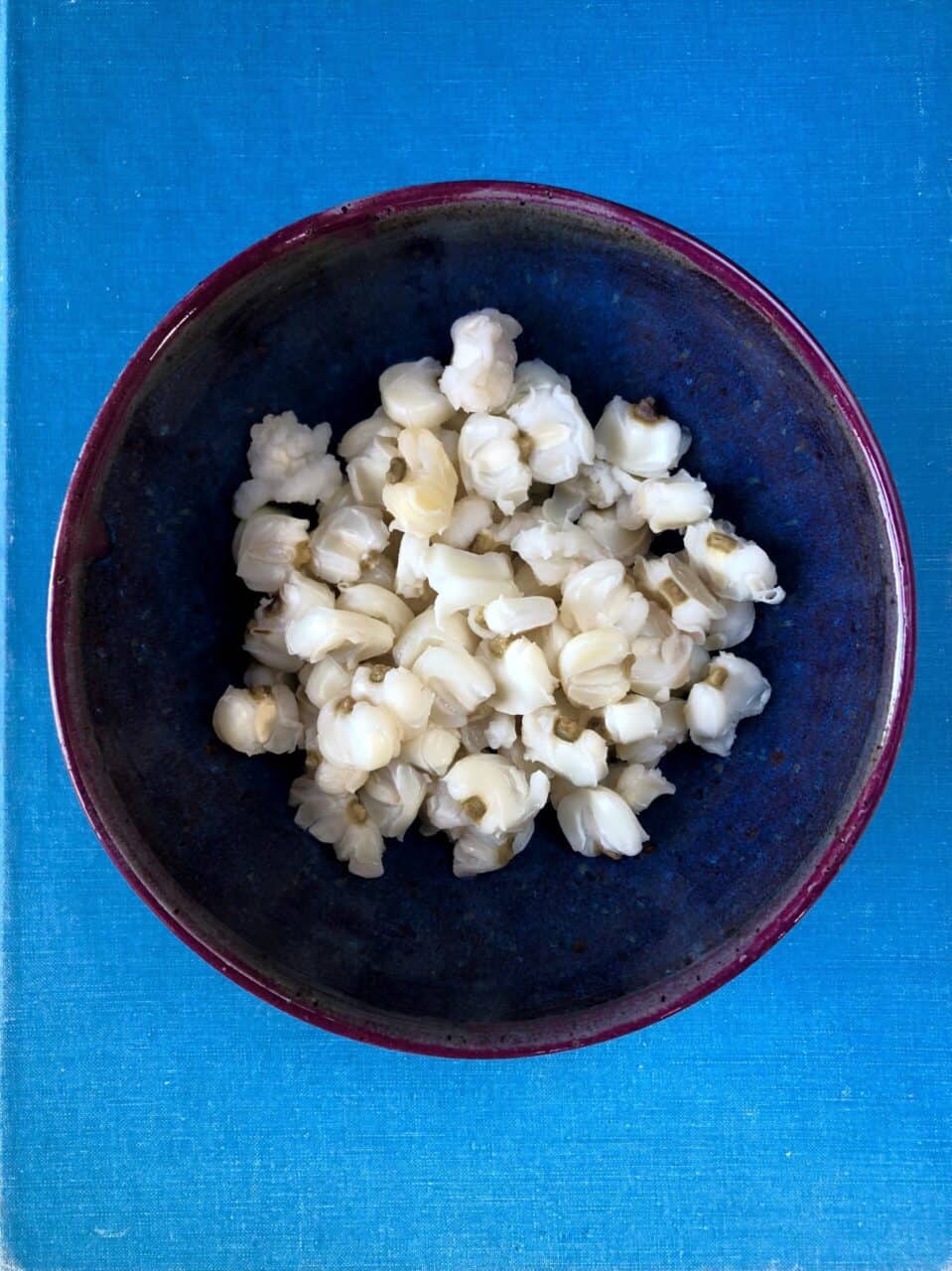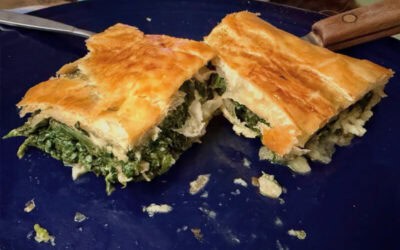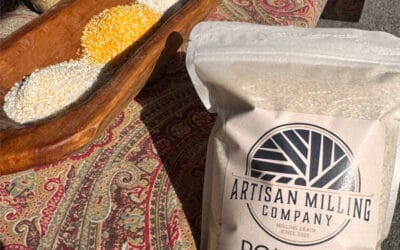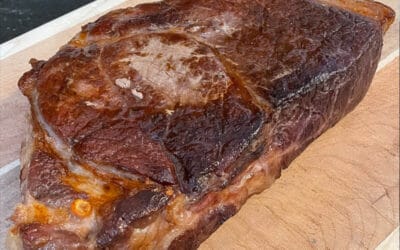Photos by Heather Cross (with help from Zachary!)
A few weeks ago I noticed that, in addition to cornmeal and grits, Brad of Riverview Farms Milling had whole dried corn for sale. He said it was for making hominy and I decided it was time to try my hand at making it at home.
Hominy: what is it, and why make it? Hominy means slightly different things to different people: white corn, grits (whether treated or not with lime), and whole corn treated with lime. I’m going to use it to described corn of any color, ground or not, and treated with an alkaline solution. The word hominy comes from the Algonquian word uskatahomen, which refers to the treated corn. The process of treating the corn is called nixtamalization – a word handed down from an Aztec language.
As you might assume from the word origins, treating corn is something that people native to the Americas discovered. Over thousands of years corn was domesticated and bred to become something resembling the staple crop of today’s world. It was a staple crop for indigenous peoples, too, and one theory about how treating maize with alkali came about is that it originated with storing corn. The kernels were dusted with wood ash – and still are in some regions – to control pests. Cooking the corn without rinsing would have made the water fairly alkaline and produced obvious changes that people must have found desirable. I know I enjoyed the smell of my hominy cooking!
Why make hominy? In my Grits and Cheese Casserole post I talk a little about corn, its history, and its nutritional value, before and after nixtamalization (the process of making hominy). Simply put, treated corn has a different nutritional makeup than untreated corn. Although some of the nutrients in corn are washed away in hominy, it has readily available niacin that was originally bound up in the corn. Also, it has added minerals, though the kinds depend on what you use to treat it with. Lye and baking soda will contribute mainly sodium (or potassium if you get the potassium versions), pickling lime contributes calcium, while wood ash contributes a variety of trace minerals.
So, hominy has additional nutritional value, but you can buy it in the store in cans and in Mexican groceries (as far as I understand) dried. Why make it at home? As with other foods you can buy at market, the reasons include local, fresh, and sustainably farmed. I enjoy hominy’s flavor out of a can, but what I made at home is on another level. Another reason to try it: fresh tortillas. I’ve tried making them with dried masa flour and it was pretty difficult. Now that I’ve made hominy I’m ready to try again. The process of making hominy creates emulsifiers that help bind tortilla dough together. Look for fresh tortillas in a future post.
Is there any reason not to make hominy? For a long time I was scared off by the alkali and the work. My kids are older now and not underfoot while I’m cooking, so my first concern is lessened. Also, I learned about using baking soda, a much gentler option if you are worried about chemical burns. As far as the work goes, it’s more trouble than soaking dried beans, but not much more.
I made two batches of hominy: one with lime water and one with baking soda. The baking soda batch was less successful, but that could have two causes. First, that I did not use enough soda (there are various recipes out there), and second that I did not put much physical effort into rubbing off the skins before the corn cooked. Like any new recipe, I assume this one will take a little practice, but one I see as paying off in future batches.
For the lime water batch I had already dissolved lime water from following these directions mentioned in the grits casserole post. We had so-so feelings about polenta made with lime water, but it was probably the second step of using an acidic liquid that was the problem. Anyway, all the recipes for hominy that I found call for dry pickling lime so I guesstimated how much of my lime water to use. I ended up with a pretty alkaline solution: my litmus paper came back dark blue, probably a pH of 13! The corn skins dissolved easily. Once I poured off the alkaline solution, rinsed the kernels, and refilled the pot, the litmus paper was only light green, pretty close to neutral. I was able to stir the kernels in the water and they floated away. It took several changes of water to clean them, but that is typical of whatever method used.
There is one step in this process that could become a deal breaker: removing the tip of the corn. This is not a necessary step, nor is it one you do for tortilla or tamale dough. Hominy you buy in the can has the tip removed. The kernel “flowers” or takes on its characteristic shape only if you remove the tip. It’s tedious, though I understand that sometimes they fall off on their own, especially with white corn varieties. I decided to leave some on and take some off and compare the difference in the finished kernels.
I like to think about my ancestors as I make a traditional dish like this. Although I only have one indigenous American in my family tree, I hope the rest of my Appalachian ancestors paid attention to the practice of nixtamalization and did not need to check into the Spartanburg Pellagra Hospital. As I talked about in my other post, pellagra is a disease caused by niacin deficiency. Eating a corn-based diet without processing at least some of the corn via nixtamalization can lead to pellagra.
When I visited New Echota State Historic Site in Calhoun Georgia (only about 20 minutes away from Riverview Farms), the old capital of the Cherokee nation, I enjoyed seeing the giant mortar and pestle used for grinding hominy (see it in the kitchen photo here). Hominy is a local food that for many of us has been forgotten and deserves to be revived!
Hominy
Ingredients: (increase proportions as desired)
Dried corn, 1 cup
Lime, also known as pickling lime, slack lime, or cal (in Mexican groceries or aisles)
*or* baking soda, 1 Tbsp
Combine corn, lime or baking soda, and water to cover by 2 inches in a pot on the stove. Make sure to use a pot deep enough to contain your ingredients with plenty of room left over, to prevent boiling over or spills. Bring to a boil, stir, then lower heat to simmer and simmer 15-30 minutes. You may notice the kernels change from white to dark orange! The baking soda batch was a brighter color than the lime batch, but the kernels definitely at least get yellow. Cover and let stand overnight.
The next morning drain off the water. One source said to pour it in the compost pile. I could see how that would be good for our acidic soil. I was afraid I might trip along the way so I poured it down the drain. I rinsed mine in the colander, then refilled the pot with cold water, stirred and drained again. I wanted to be extra careful, but the first batch of fresh water had a low enough pH that I should have been fine.
Now you need to remove the skins. Depending on the strength of your solution, and to some degree the variety of corn itself, this may take only stirring the solution, or it may require rubbing the kernels with your hands. Change the water as needed to see how you are progressing. You will know when the skins are gone because the hominy is white and the kernels yellow (if white corn). Even other colors of corn will make white hominy, though their skins will be different colors.
Once the skins are gone you can decide whether or not to remove the tips. Now you can use the hominy for tortilla dough or a dish such as posole (recipe coming soon). You can also eat hominy on its own with butter and salt. To use whole cook for 2 to 3 hours until tender, changing the water if it becomes cloudy while cooking.
I’ve noticed that some kernels end up looking exploded and others not. Canned hominy does not have the exploded look. I think it’s partly how quickly the hominy cooks; one recipe I saw online used a pressure cooker and all of the kernels had burst.
Yield: Hominy is roughly double the size of the corn you started with. So, 1 cup corn yields 2 cups hominy, 2 cups corn 4 cups hominy, etc.
Find more information from Mother Earth News, Gourmet Sleuth, and Our Everyday Life.





0 Comments